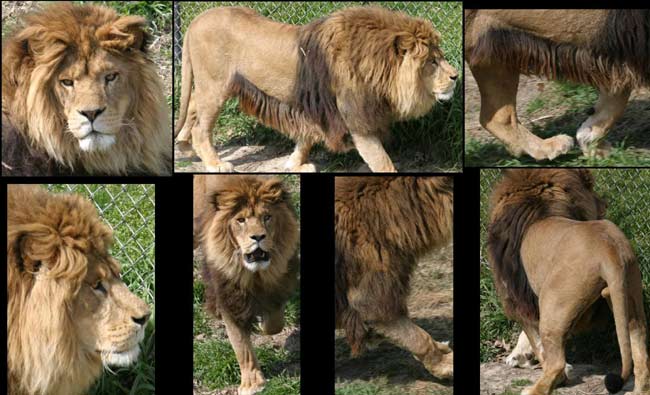Lion's Sexy Secret: It's in the Mane

Given the choice, a female lion is more likely to be attracted to a shaggy male from Chicago than a well-groomed guy from Houston.
Chicago lions simply got more game.
Scientists measured the size and fullness of lions' manes in northern and southern zoos and found that cats living in colder climates had heartier hairstyles, a key attractant to female lions.
Nutrition, social factors, and genetics have previously been considered important factors affecting mane quality, but the new finding suggests that up to one-half of the mane's length and density is determined by temperature.
The study is detailed in the April 13 issue of the Journal of Mammalogy.
Keep it cool
A thick mane retains heat in a hot, dry climate—like wearing a fur hat or wool scarf—and can cause a big cat to overheat.
Get the world’s most fascinating discoveries delivered straight to your inbox.
Average temperatures in the parks that were studied— spanning 2,000 miles from Illinois to Texas —varied from 20 to 54 degrees Fahrenheit in January and 65 to 87 degrees in July.
While all the lions had full manes around the forehead, sideburns, shoulders, and throat, occupants of southern zoos lack hair in other areas, such as the elbows, belly, ribs, and back.
"We evaluated lions on the same spatial scale that females and males evaluate them, which is from 20 to 30 yards away," said study leader Bruce Patterson of The Field Museum. "The elbows, ribs, back, belly, flanks—those are areas that you only see thick in northern zoos."
Photographs show it all:
Northern zoo lions, such as one from Illinois and a male from St. Louis, both have extremely sexy manes. Hair grows halfway down their backs, all over their front legs, and even on their bellies.
Two southern lions, one from Houston and another from Tyler, Texas, both sport impressive manes, the judges say. But their hair looks thinner than the northern lions and they're hairless on the back and belly.
Price to pay
The quality of a male's mane broadcasts information to both sexes. A large, thick mane tells the other guys to "stay away," and says "come hither" to the girls.
But a sexy mane has its price. It gives away location to prey, makes it difficult to move through bushes, and can harbor parasites.
Mostly it takes a lot of energy from food to grow and maintain, which is why captive lions generally sport more impressive manes. Zoo lions eat about six meals of 5 to 10 pounds of meat a week, the feline equivalent of three square meals a day.
Unlike wild lions, captive lions don't have to fight for their food. After losing a fight, a wild lion feels less manly and his testosterone levels drop, which thins out his mane.
"[Wild lions] have to fight territorial battles and won't have the studly manes that [captive] guys do," Patterson told LiveScience.
Wild thing
Transport a zoo lion to the wild, and its mane would probably suffer from lack of food and water. Transplanted males would make their presence known, however, in the short time they would have to flaunt their manes.
"Conventional wisdom," Patterson said, "is that the males would run from them and the females would run up to them."
In places like Tsavo, Kenya, where lions grow patchy manes that resemble the hairdo of Bruce Willis more than Jon Bon Jovi, females still rely on relative mane heartiness when selecting a mate.
"Even here, a male with more testosterone, that's better nourished, and displays all the good genes a female should be interested in will still have a better mane than the guy with a ratty mane next to him," Patterson said.
Mane extent and thickness are not the result of natural selection, scientists say. Instead, these traits vary depending on local conditions. This could alter current classification methods, which rely mainly on the outward appearance of the cats. There are currently 23 proposed names for African lions, but this research and recent genetic studies could cause that number to decrease.


